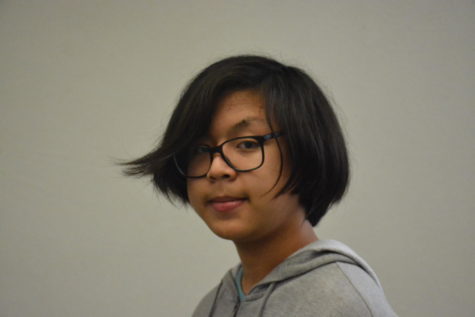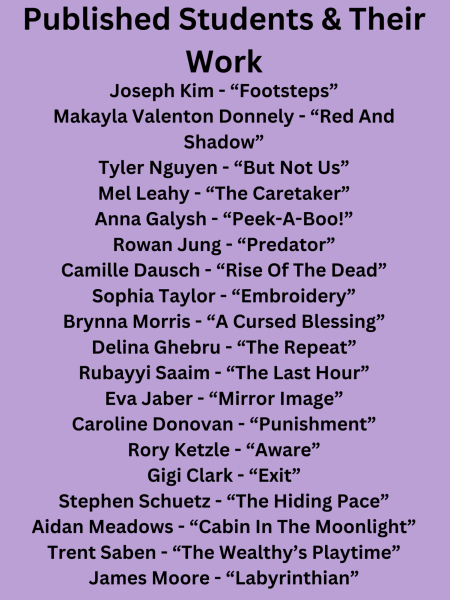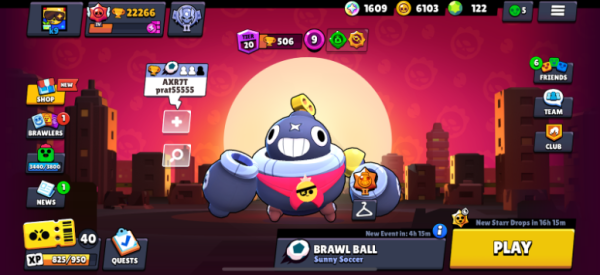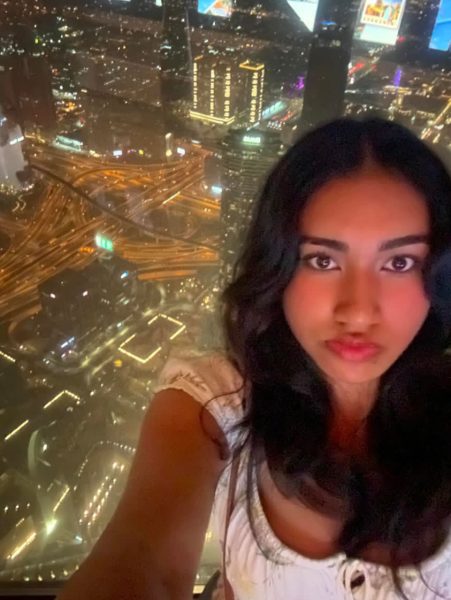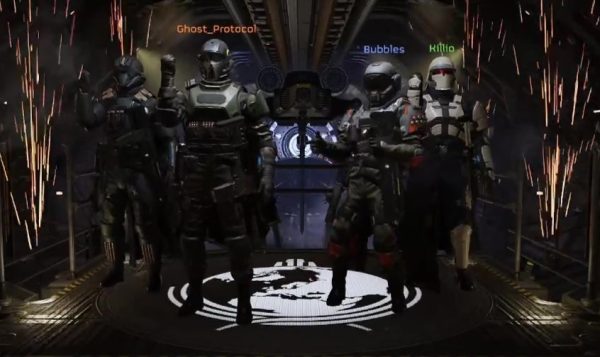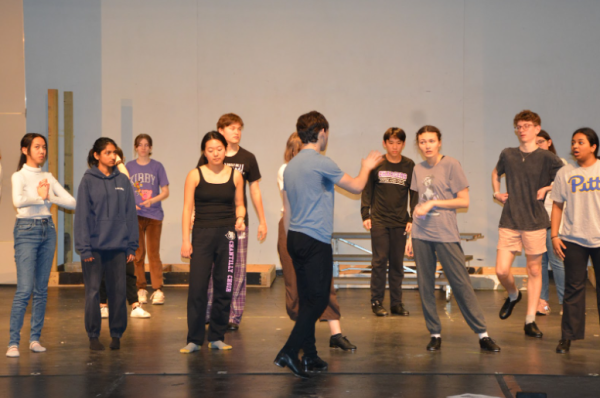Machine-made media draws discussions on value, future of art

Image generated using Dream by WOMBO AI with the prompt “city street at night, neon lights, rain, illustrated”
December 9, 2022
The typing of letters and the “Enter” key become the new sketches and brushstrokes as artificial intelligence (AI) becomes more and more capable of producing visual media. When using AI to generate art, the user has to input a prompt for the AI to convey the idea as an image. While complex AI art generators sometimes require a fee, the technology is becoming more accessible. Websites like Craiyon, a text prompt based AI art program, and Artbreeder, an image combining algorithm, are available to use for free.
“I’ve seen [AI art] memes,” senior Arjun Mudda said. “I’ve seen it in paintings, too. They will have the ‘Mona Lisa’ or something and they will take an image of another person and mesh it with [the ‘Mona Lisa’]. For example, I saw Tom Holland, but as the ‘Mona Lisa’.”
Although the power of AI art has achieved virality for its novelty, it has also seen use in formal artistic contexts. In August 2022, a painting generated with a text prompt using the AI program Midjourney was awarded first place at a digital arts competition at the Colorado State Fair. The AI generated painting was judged in the same category as paintings produced by human hands.
“I feel art is about having a skill set and showcasing your talents and all the little things that go into art like principles of design,” digital art teacher Christine Choi said. “When a code generates art for you, there’s no creative process.”
According to Slate, AI art generators are trained by referencing images across the internet. As such, the output of AI art generators is based entirely on pre-existing content, whether it be photographs or illustrations. This reliance on past work has led to concerns about the originality of generated art and whether or not it violates copyright.
“I always think about copyright issues,” Choi said. “It depends on how much the AI takes from parts of the [original] artwork. If AI takes a very small part of the artwork and uses it within a whole different meaning, then yes, I guess it would be considered original; if it doesn’t do that, then it goes against copyright.”
Regardless of the questions surrounding the originality of AI art generators, the use of them allows for more people to be involved with art as users can visualize any idea without needing to rely on their artistic ability . AI art generators already have a high user base, and the number of people using them is expected to grow as the technology progresses. According to OpenAI, DALL-E, their paid AI art generation service, had at least a million users as of August.
“I can see AI generated art having a future as it enables those who might not have well developed art skills to express themselves in a variety of ways,” freshman Sammy Lim said.
Still, concerns remain over the growing power of artificial intelligence. If the generators progress to the point where their output is predictable and consistently coherent, then AI might become a common alternative to human artists. According to the career research platform Zippia, as many as 375 million jobs could be replaced by AI in the next ten years.
“It’s kind of like a shortcut, in a way, for art,” Choi said. “I feel like people will be using it only because it’s such an easy route.”
The growth of artificial intelligence, both in popularity and power, shows no signs of stopping. Only time will tell what changes will need to be made in legislation surrounding AI and art for the generators to exist without affecting human artists.
“I can see [AI] being a problem, and that doesn’t only apply to arts,” Mudda said. “Jobs in general, like customer service, can easily be taken over by AI, so I think we have to solve these issues as we make progress with AI.”


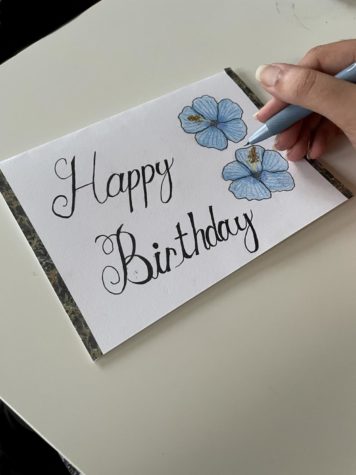
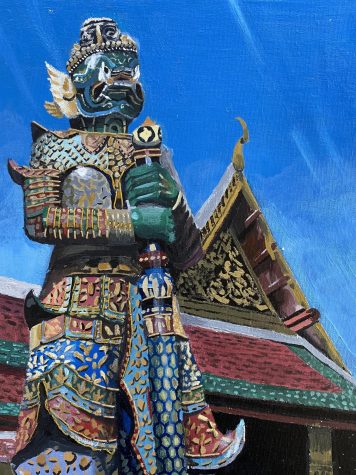
![Many museums, like the National Museum of African Art and the National Museum of Asian Art, were constructed for the sole purpose of displaying underrepresented artists in the United States, but those pieces are rarely featured in well-known museums. Feminist artists and people of color (POC) often inspire others through their expressive creations. At the Smithsonian American Art Museum, a diverse amount of cultures and feminist art can be found, including this one, which was located in the museums Feminist Exhibit.
“I’ve always been more into female artists because I recognized how, in my life, a lot of the teachers are male or the art I [studied] was always white male art,” art history teacher Terilynn Thomas said. “It was interesting how the females are always the add-on or the tail end of white American or European artists.”](https://chantillynews.org/wp-content/uploads/2021/11/Feminism-Quote-Howardena-Pindell-e1637014763555-475x320.jpg)
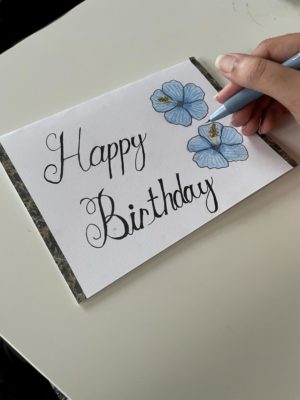
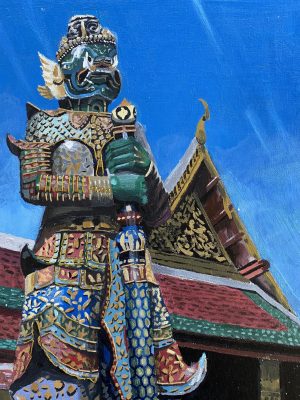
![Many museums, like the National Museum of African Art and the National Museum of Asian Art, were constructed for the sole purpose of displaying underrepresented artists in the United States, but those pieces are rarely featured in well-known museums. Feminist artists and people of color (POC) often inspire others through their expressive creations. At the Smithsonian American Art Museum, a diverse amount of cultures and feminist art can be found, including this one, which was located in the museums Feminist Exhibit.
“I’ve always been more into female artists because I recognized how, in my life, a lot of the teachers are male or the art I [studied] was always white male art,” art history teacher Terilynn Thomas said. “It was interesting how the females are always the add-on or the tail end of white American or European artists.”](https://chantillynews.org/wp-content/uploads/2021/11/Feminism-Quote-Howardena-Pindell-e1637014763555-300x202.jpg)
